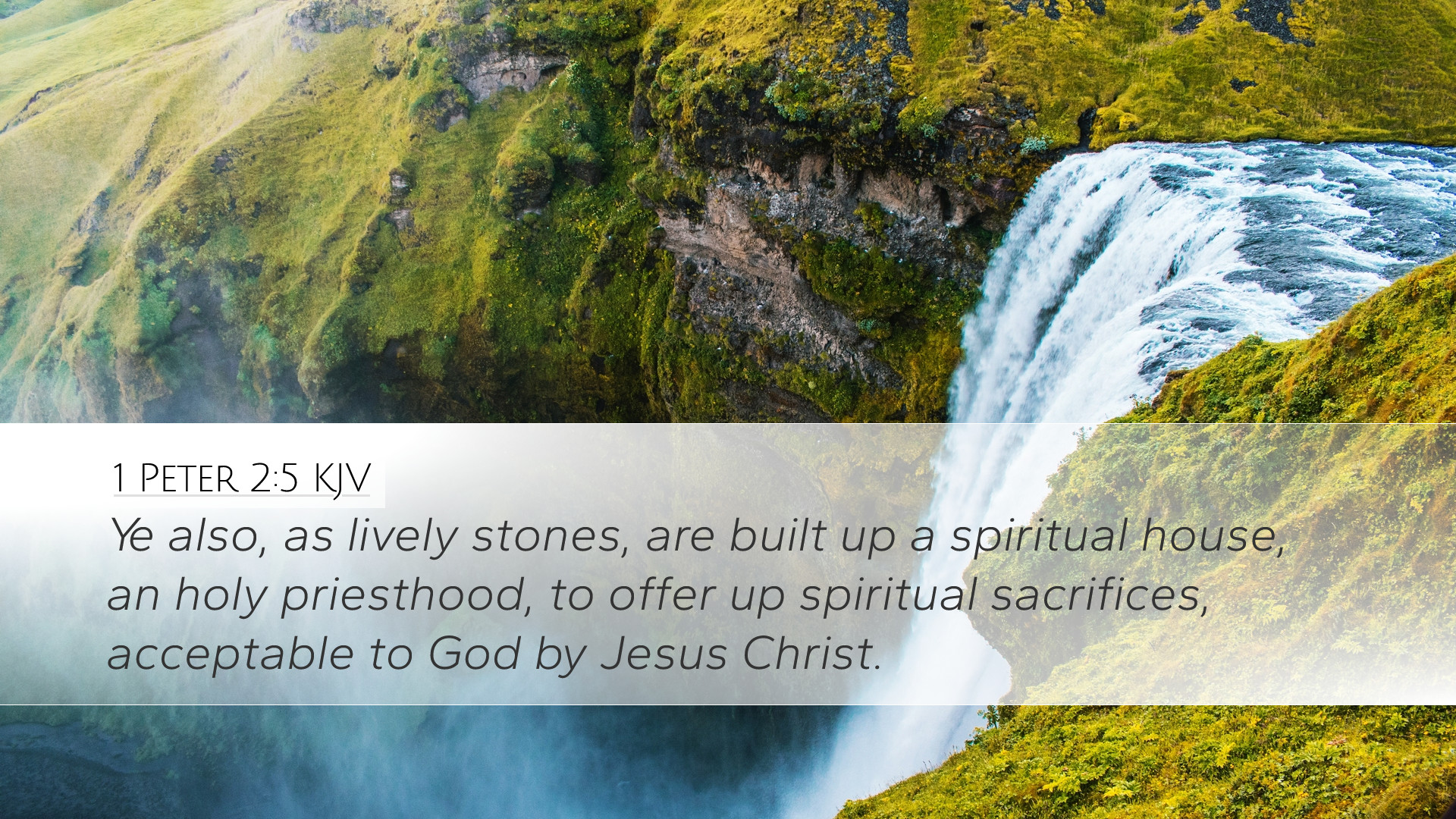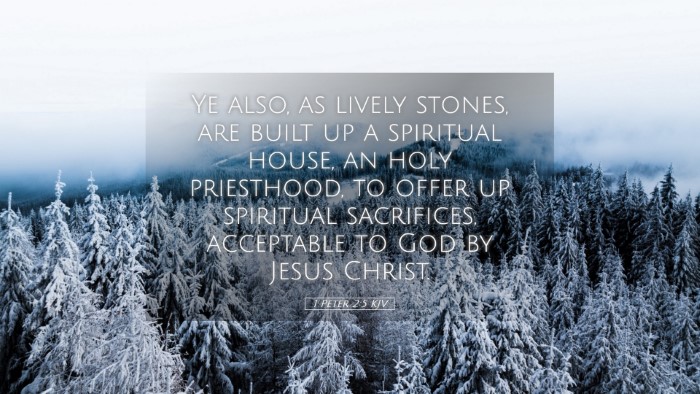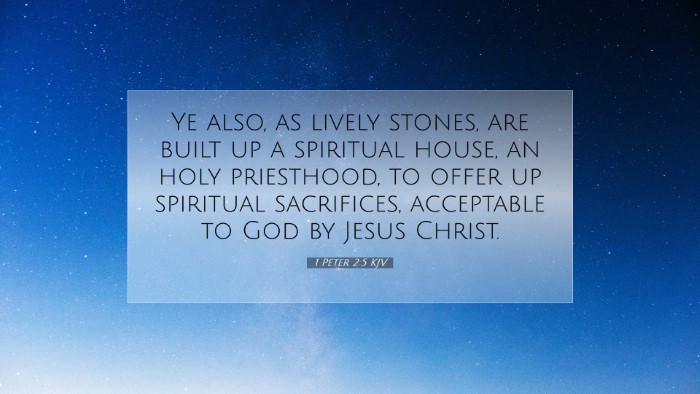Commentary on 1 Peter 2:5
Verse Context: 1 Peter 2:5 states, “You also, as living stones, are built up a spiritual house, a holy priesthood, to offer up spiritual sacrifices, acceptable to God by Jesus Christ.” This verse highlights the identity and purpose of believers in Christ as they form part of a spiritual edifice, reflecting both their communal and individual roles within the body of Christ.
Exegesis and Insights:
This verse contains rich theological implications regarding the nature of the church and the believer's role within it. It presents a metaphorical framework that construction of the church as a spiritual house, emphasizing the interplay between Christ's foundational role and the participatory aspect of believers.
Living Stones
The term “living stones” carries several significant meanings:
- Vitality: Unlike inanimate stones, living stones represent vitality and growth. Matthew Henry emphasizes the dynamic aspect of believers’ lives as they are animated by the Holy Spirit, being continuously molded and shaped into a community that reflects Christ.
- Unity in Diversity: The apostle Peter illustrates that each believer, regardless of background or spiritual maturity, contributes to the whole. Albert Barnes notes that the church consists of various 'stones,' each unique yet essential to the structure, depicting the beauty of diversity within unity.
- God's Craftsmanship: Adam Clarke points out that God is the master builder who selects, prepares, and places each stone in its appointed position, signifying divine intentionality in the church's formation and function.
Spiritual House
This metaphor of the church as a “spiritual house” underscores several theological insights:
- Holiness: The house is described as “holy,” revealing the calling to a lifestyle of sanctity and purity. Henry comments that the church is not merely a physical structure; rather, it possesses a spiritual dimension that calls for ethical living in alignment with God’s holiness.
- Permanent Dwelling: In the Old Testament, the temple was the dwelling place of God. Here, however, the church as a spiritual house suggests that God resides among His people through the Holy Spirit, which Clarke remarks is a fulfillment of God’s promise to dwell in and among His followers.
Holy Priesthood
Another profound aspect of this verse is the designation of believers as a “holy priesthood.” This concept invites believers into a participatory role in spiritual activities:
- Access to God: Under the Old Testament system, priests alone could approach God in the temple. However, through Christ, all believers now have direct access to God, enabling them to offer spiritual sacrifices as a collective priesthood, Barnes notes.
- Continuity of Service: As priests, believers are called to serve—not in a ceremonial capacity but through acts that glorify God in their daily lives. Clarke emphasizes that this service should manifest in good works, prayer, and leading others to Christ.
Spiritual Sacrifices
The verse concludes with the notion of offering “spiritual sacrifices.” This phrase encapsulates the essence of Christian worship:
- Acceptable to God: The sacrifices offered by this priesthood are defined as spiritual, moving away from the material and ceremonial towards a heart-centered, honest service. Matthew Henry points out that these sacrifices stem from a grateful heart, thus pleasing to God.
- Life as Worship: Believers are called to live lives that reflect worship in every aspect. Barnes reflects on Romans 12:1, which urges believers to present their bodies as living sacrifices, indicating that every action can be an act of worship if done in faith and goodness.
Theological Implications:
This verse contains deep implications for understanding the nature of the church and the responsibility of its members:
- Identity Formation: As believers, understanding oneself as part of a living structure affirms a commitment to the community of faith. Clarke articulates how understanding one's role as part of this spiritual house empowers individuals to explore their spiritual gifts for the benefit of the body.
- Mission of the Church: The identity of believers and their priestly role contribute to the mission of the church in the world, which is to extend the kingdom of God through evangelism, service, and community engagement, as highlighted by Henry.
- Encouragement in Trials: Peter's audience faced persecution, and he offers a reminder of their valuable identity and role despite their sufferings. This perspective, noted by Barnes, helps bolster their morale and encourages steadfastness in faith.
Conclusion:
In summation, 1 Peter 2:5 calls believers into a deeper understanding of their identity and purpose within the context of the church as a “spiritual house” where Christ is the cornerstone. The call to be “living stones” and a “holy priesthood” serves not only as a comforting reminder amidst trials but also as an empowering declaration of their collective mission in the world. The operations of spiritual sacrifices signify that every believer possesses a role in the ongoing worship and service to God, marking their lives as testimonies of faith and agents of change within their communities.


